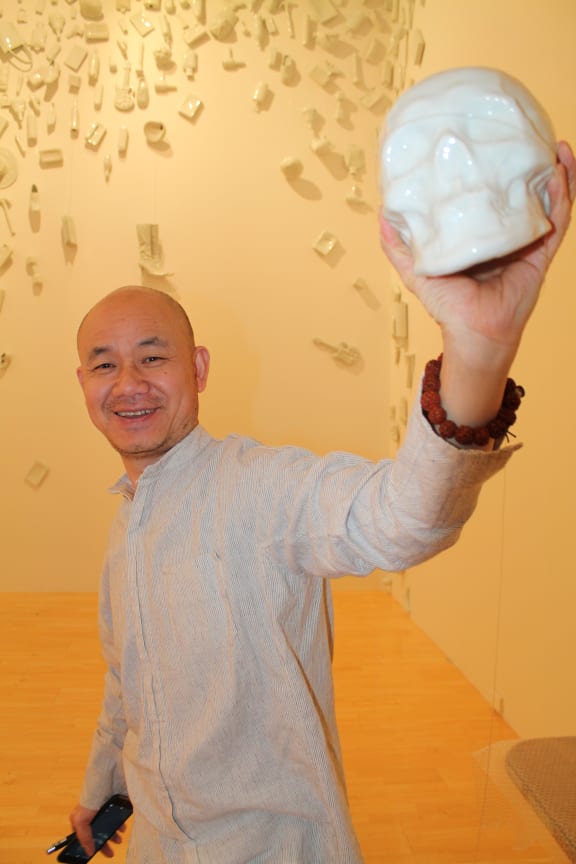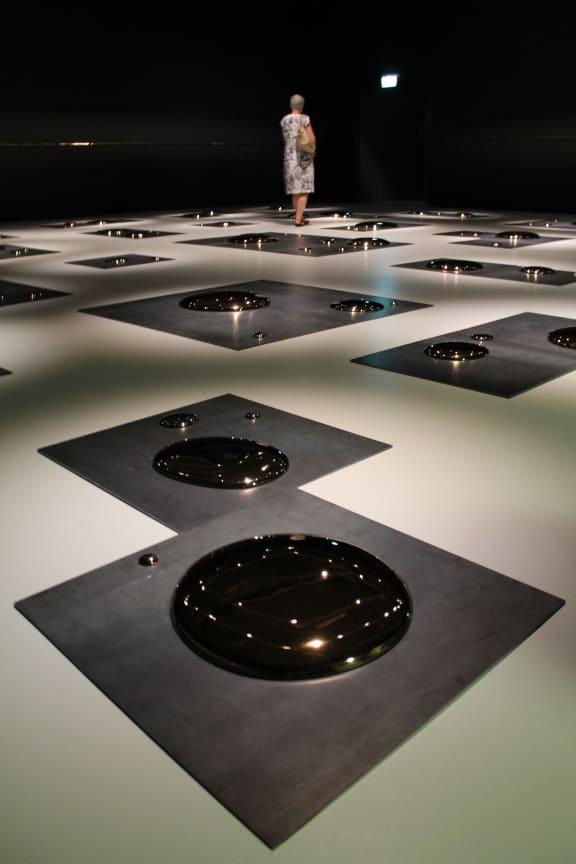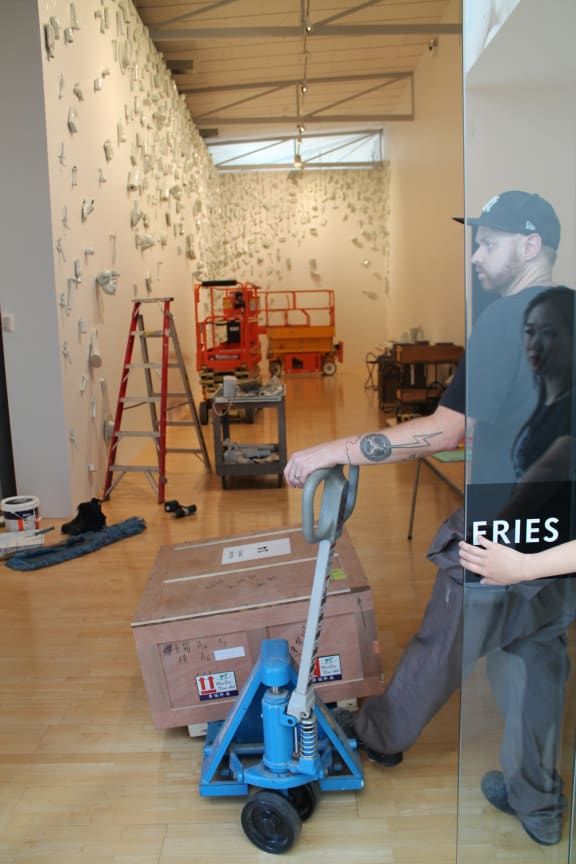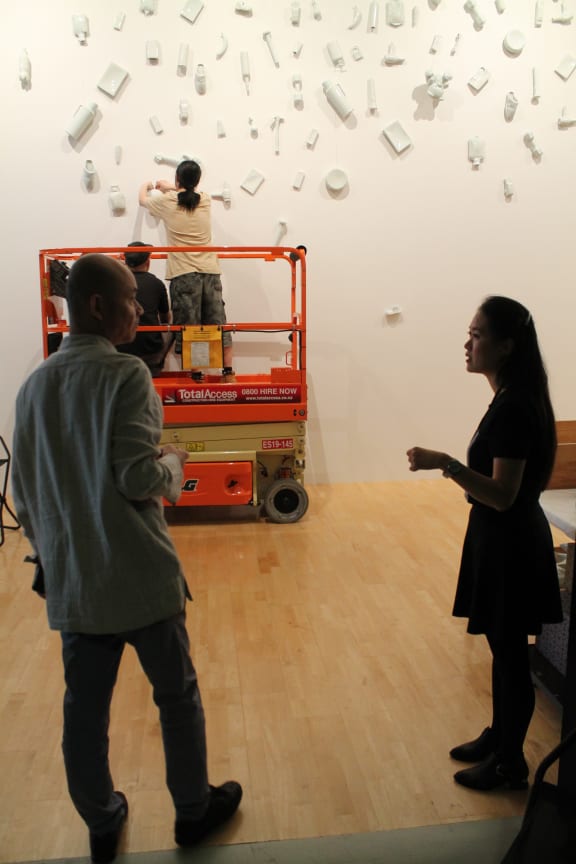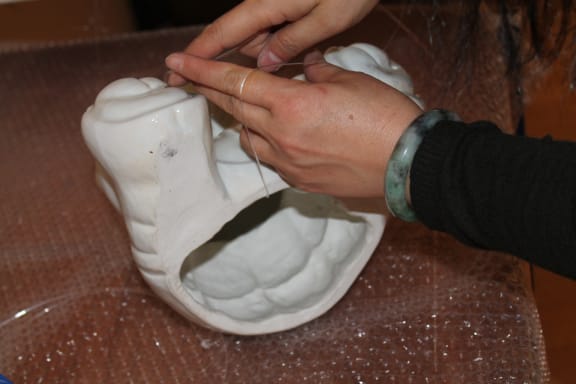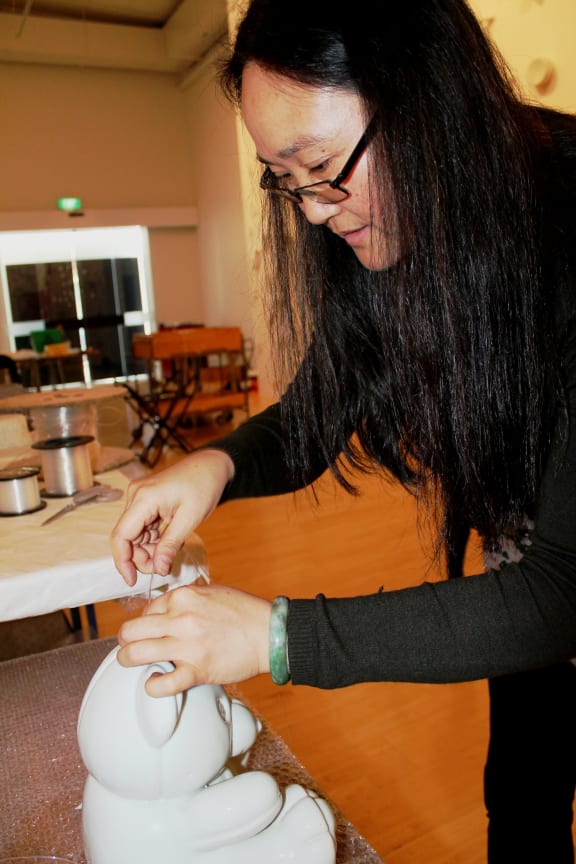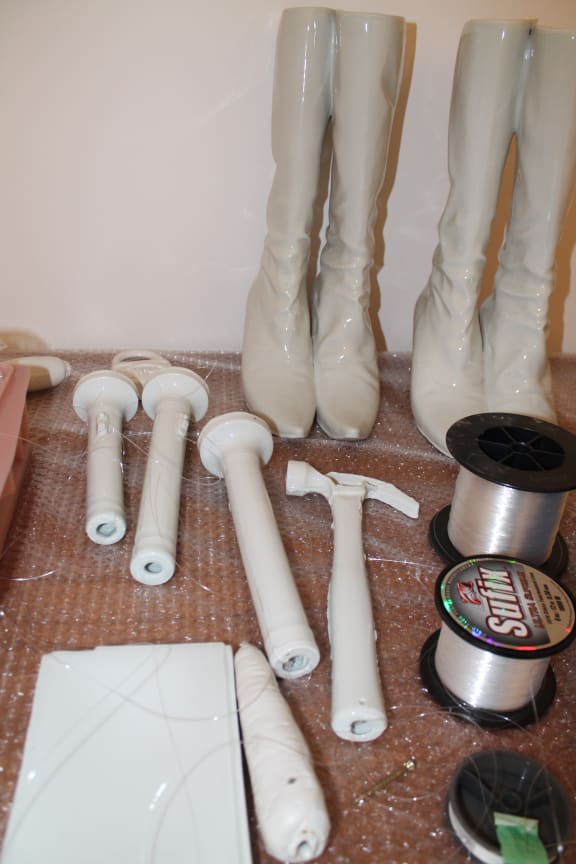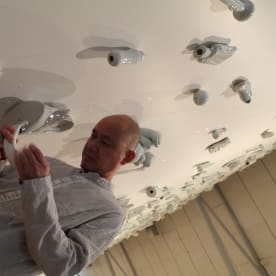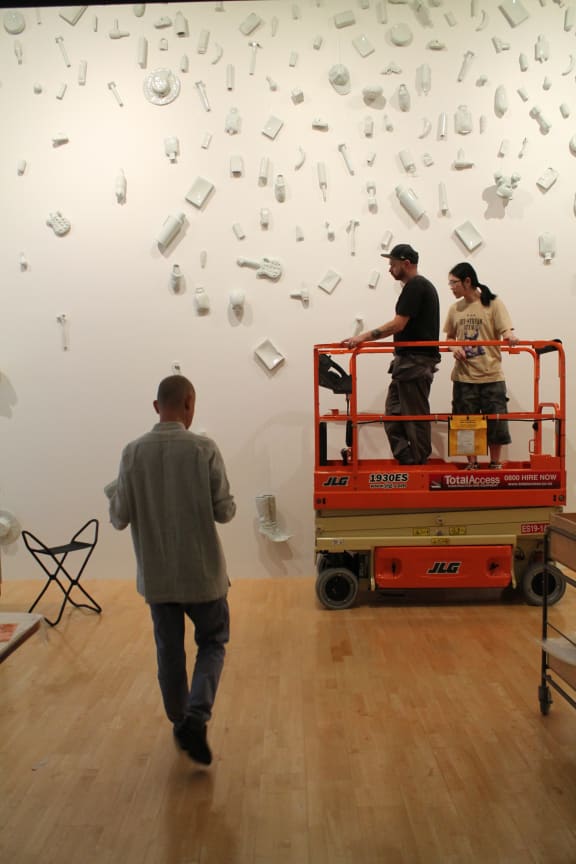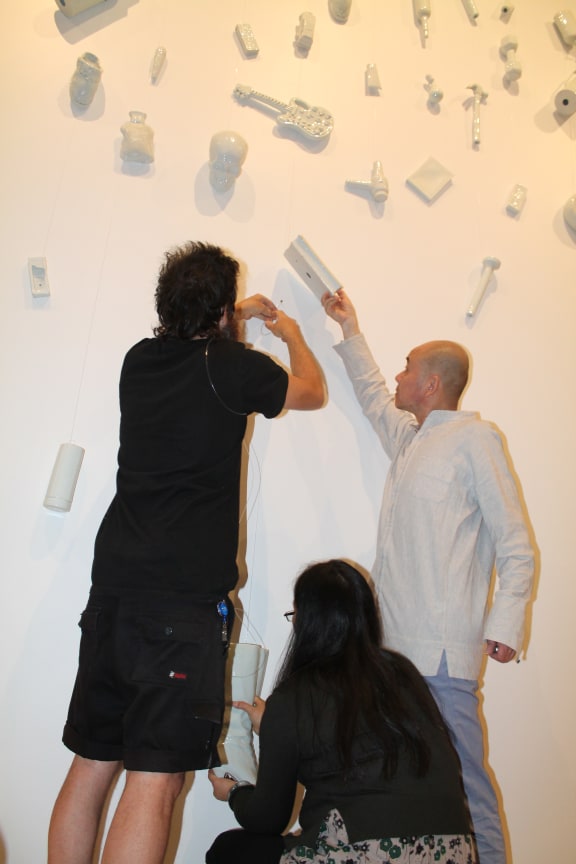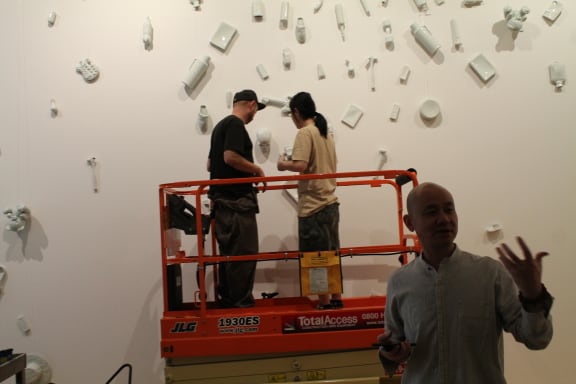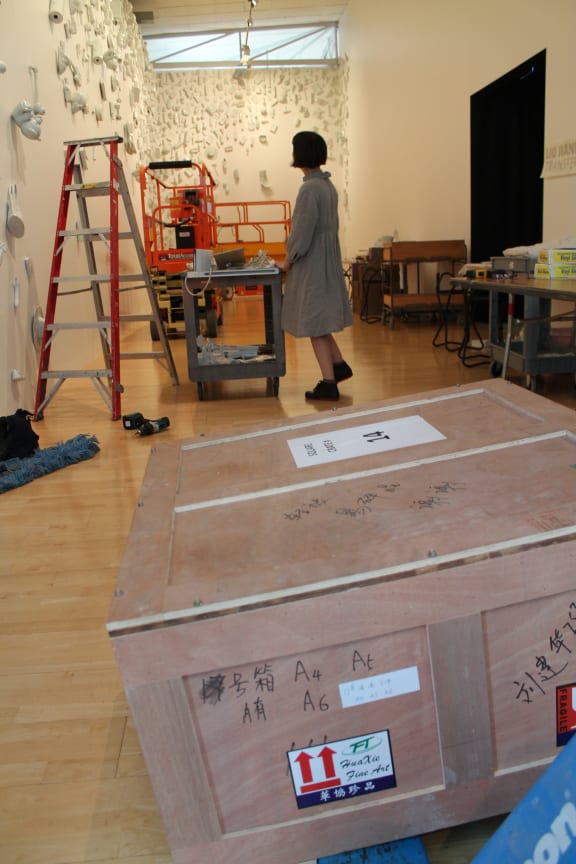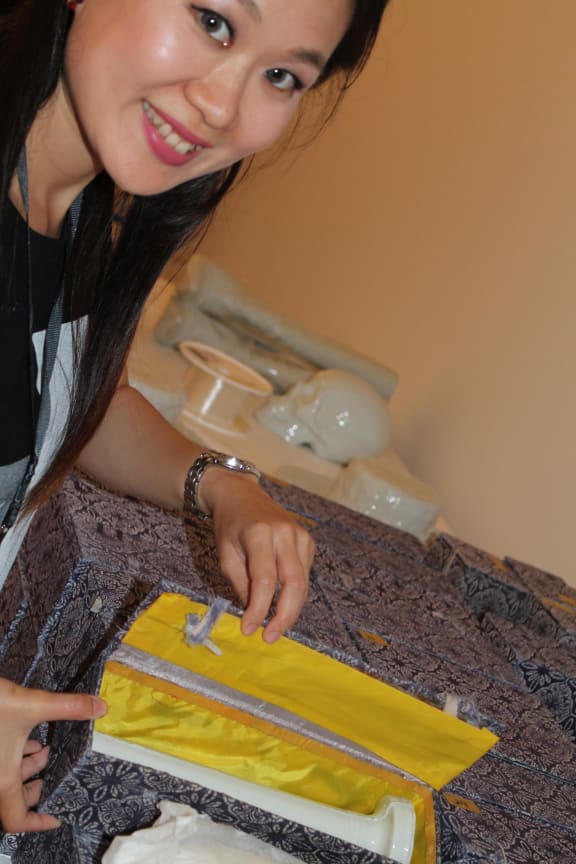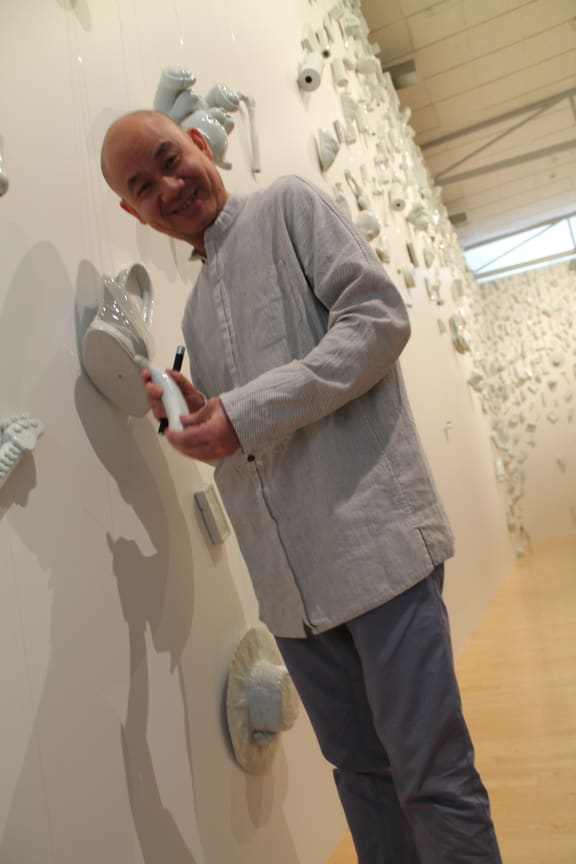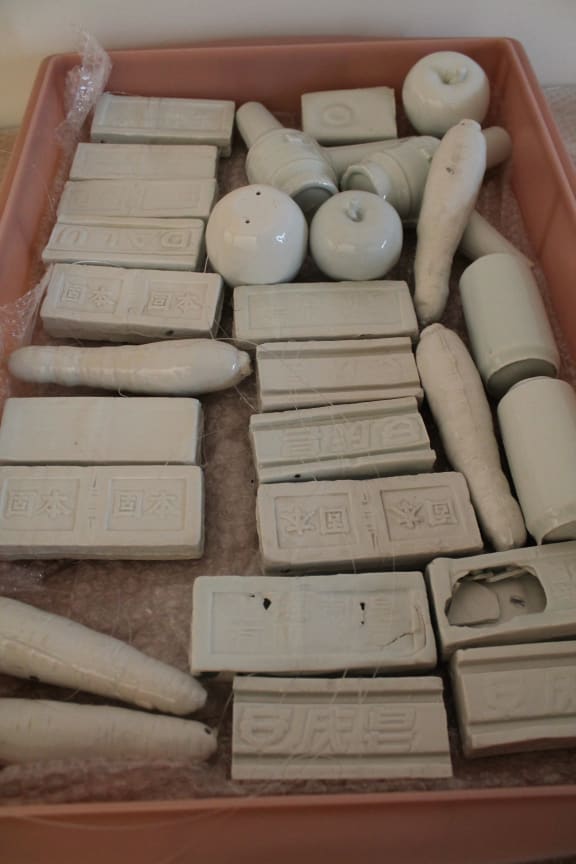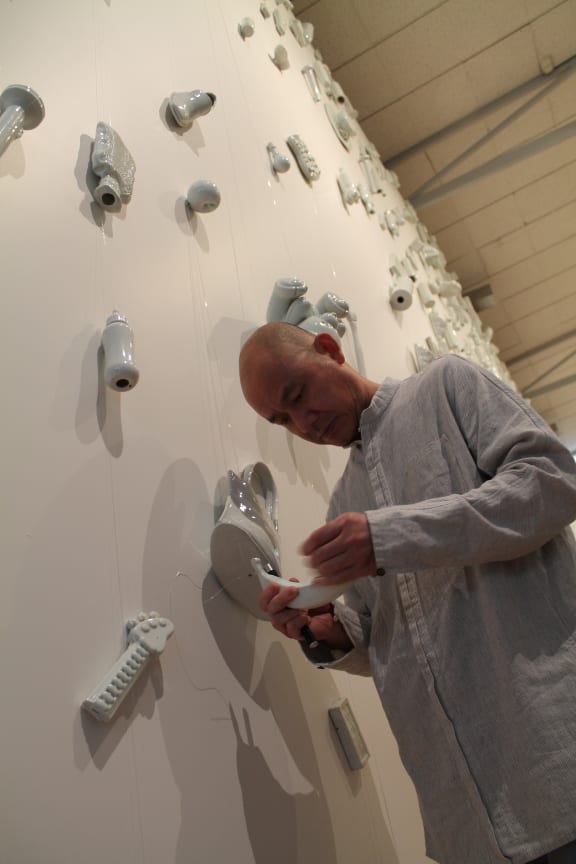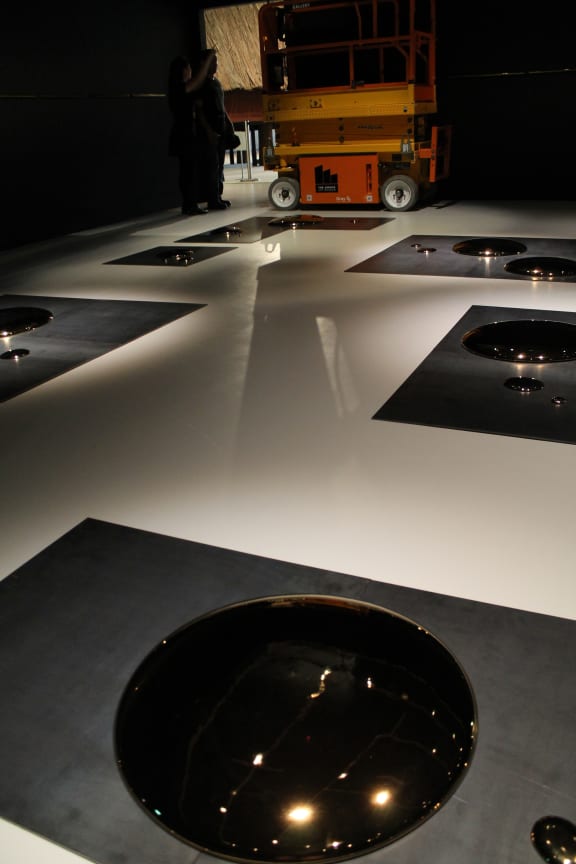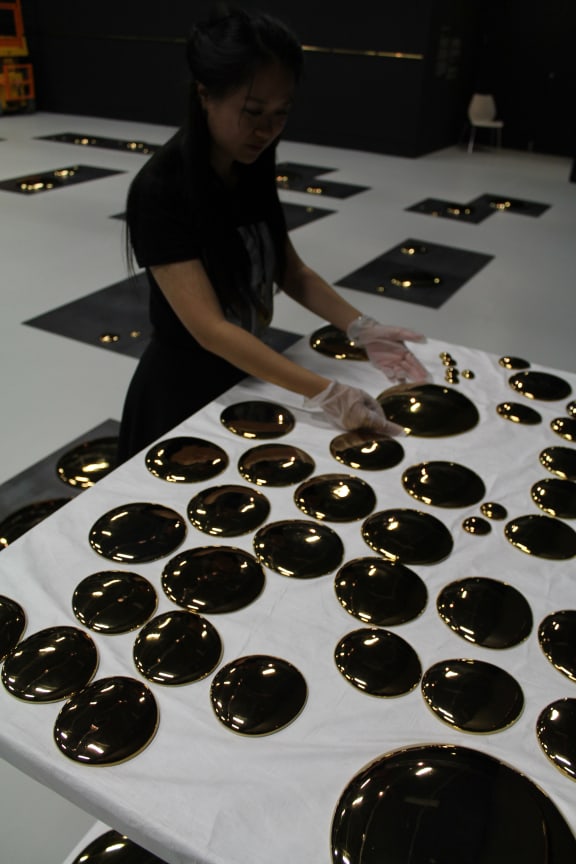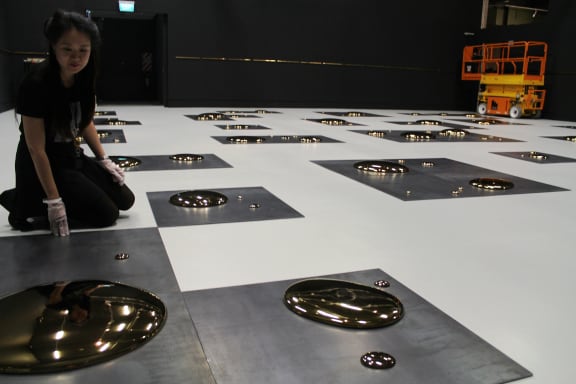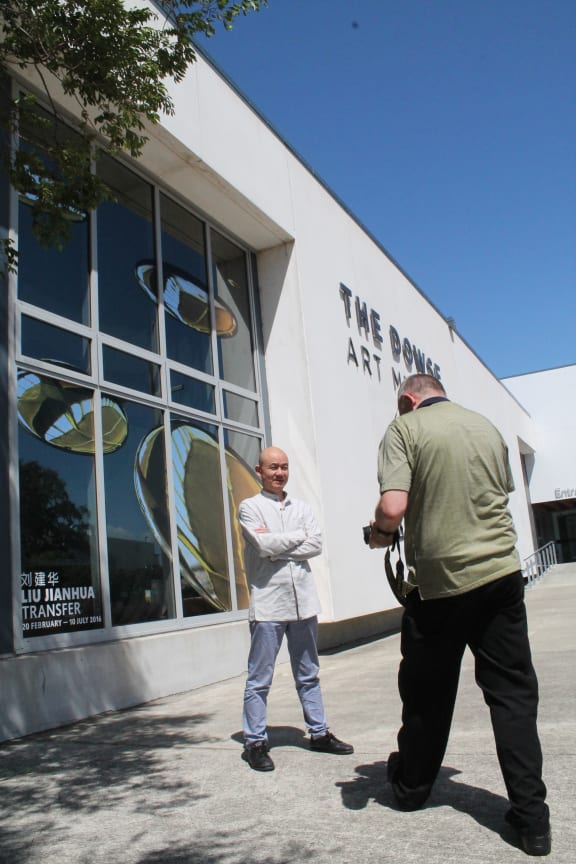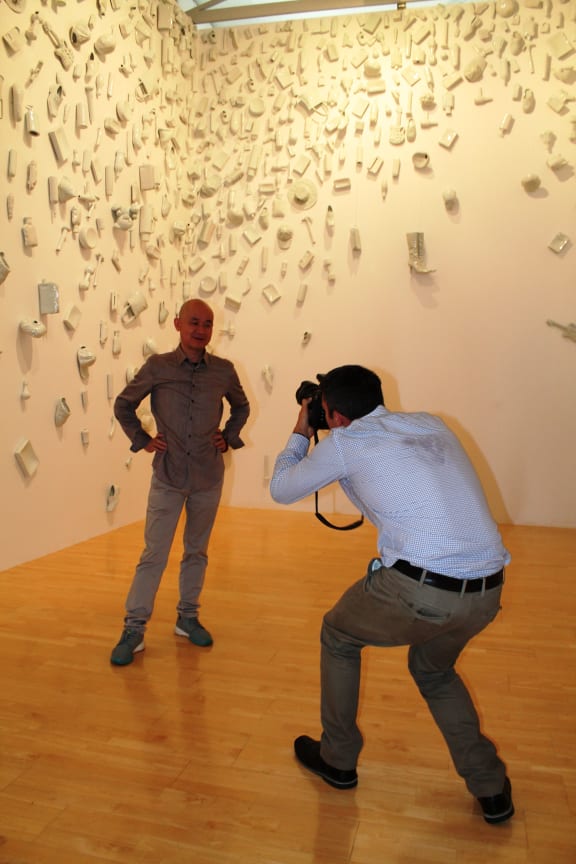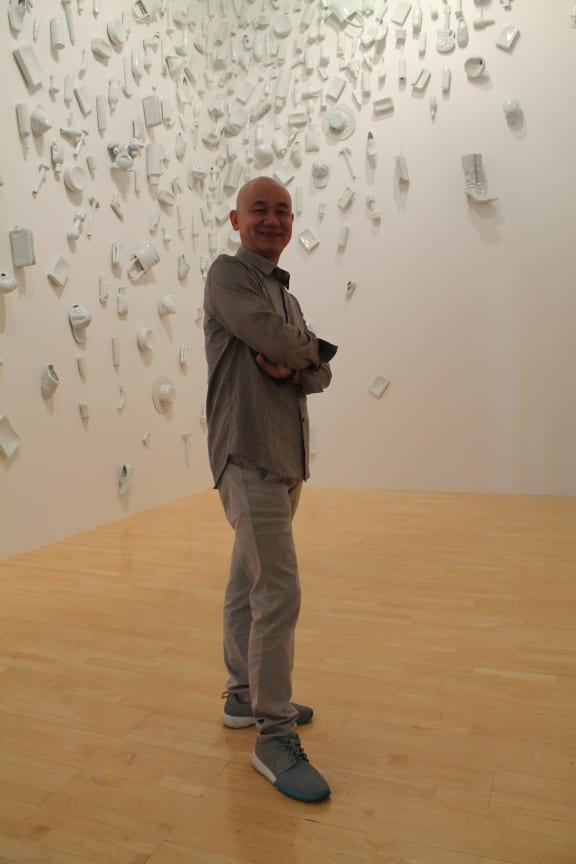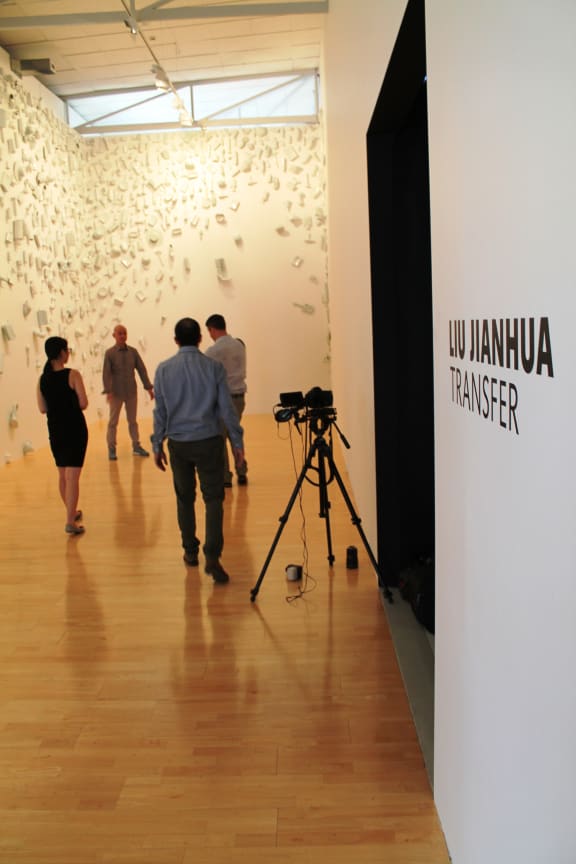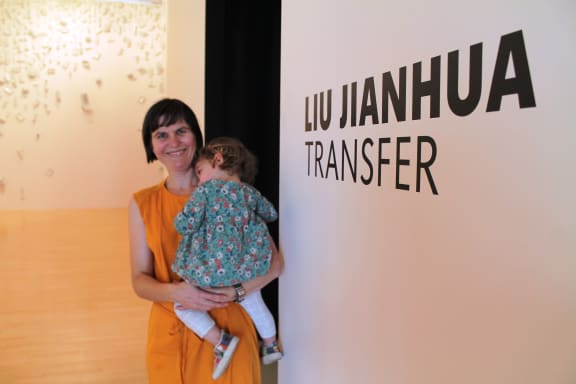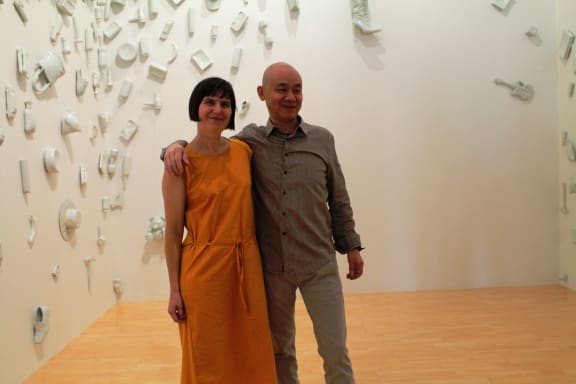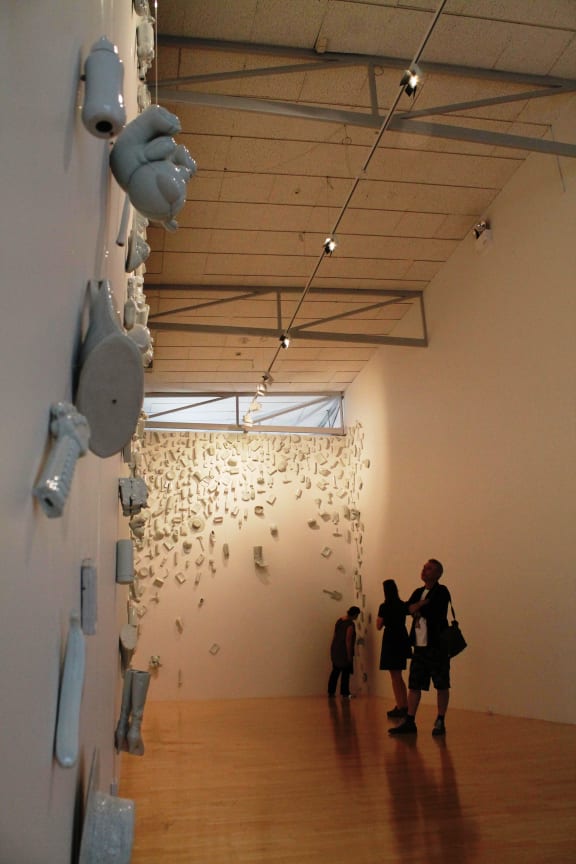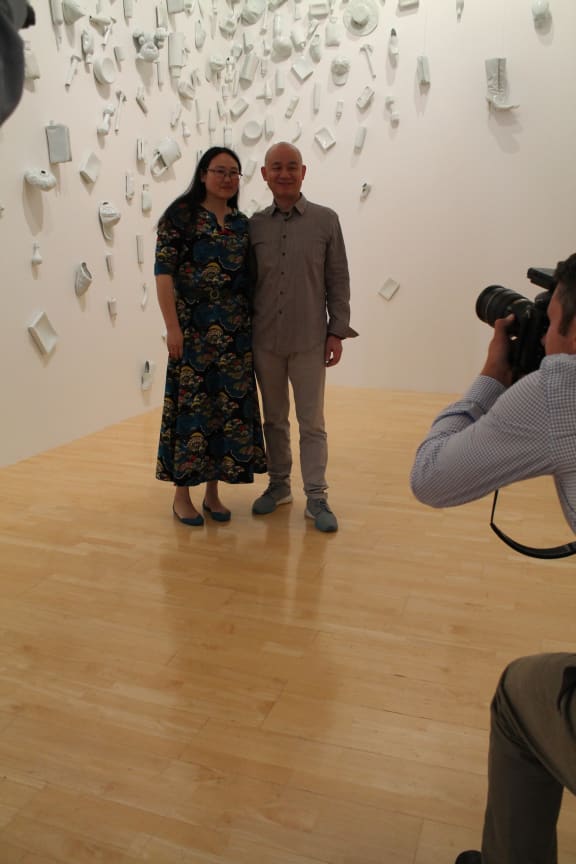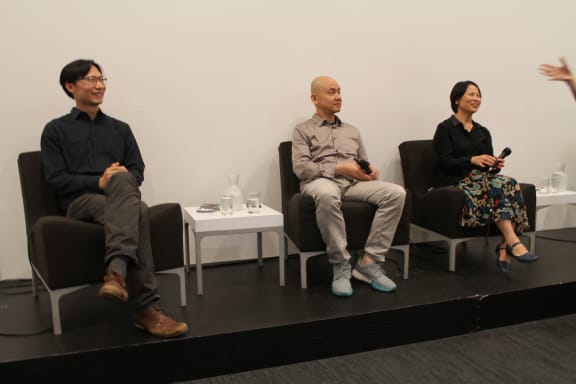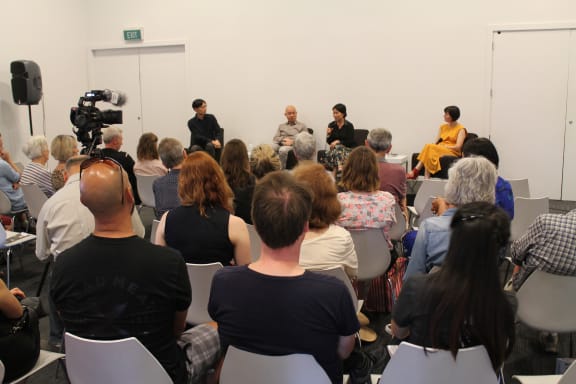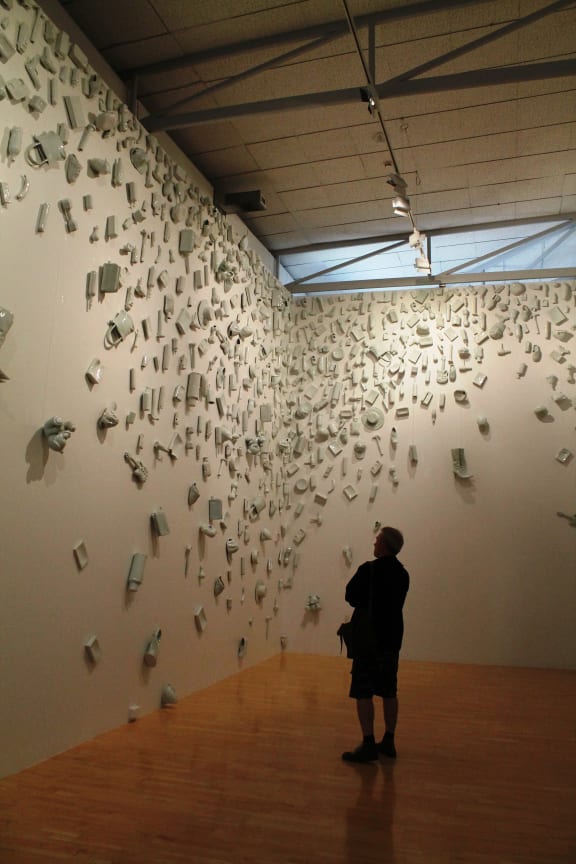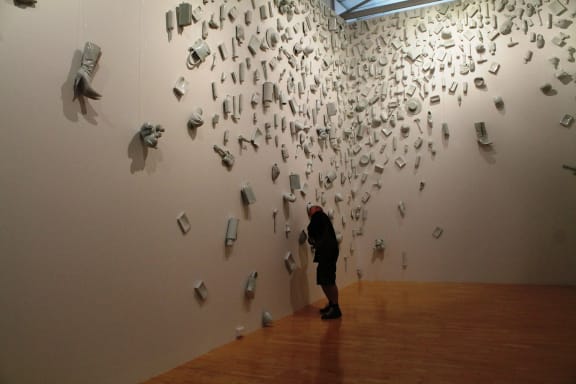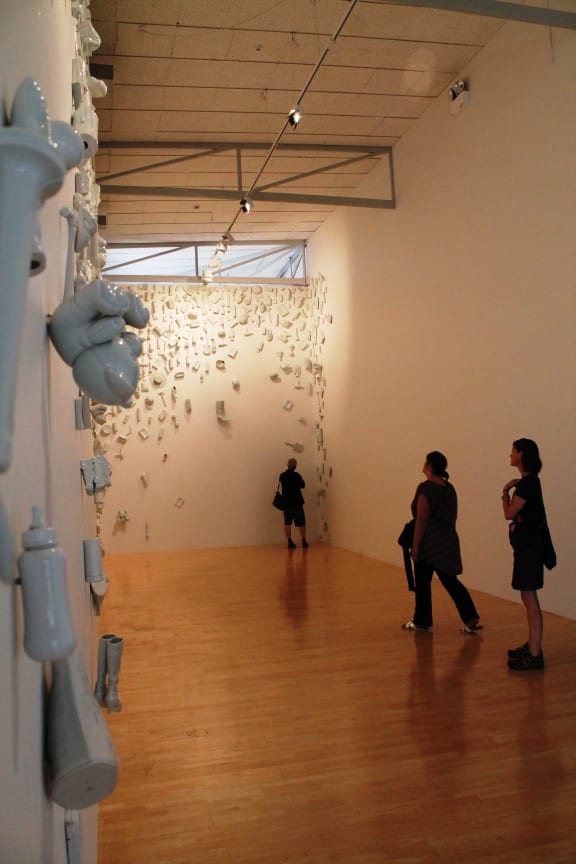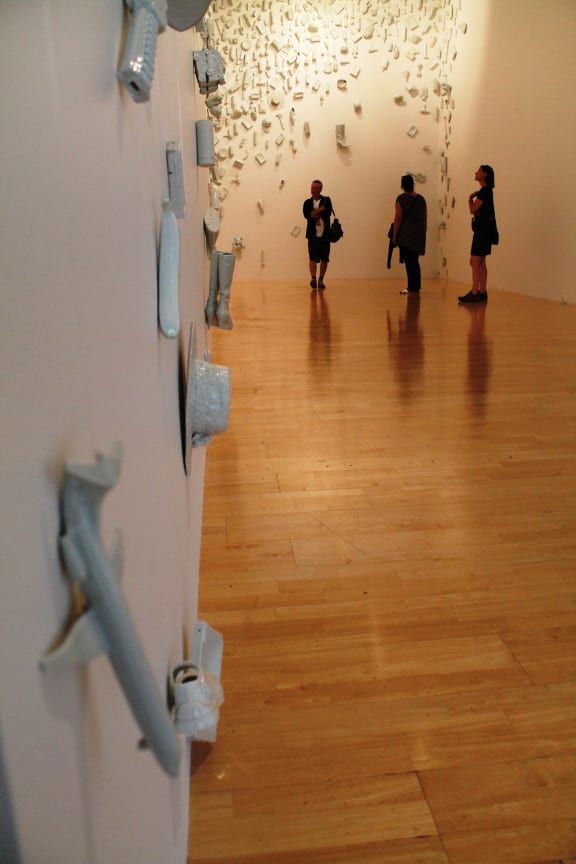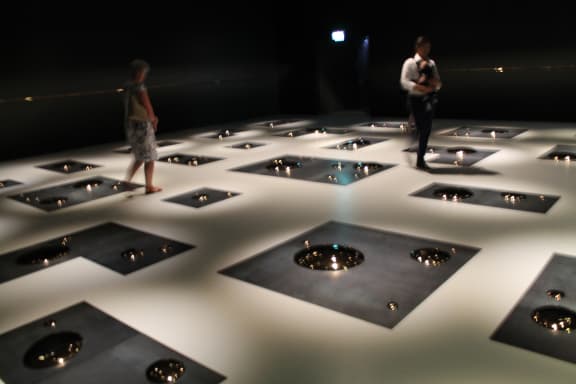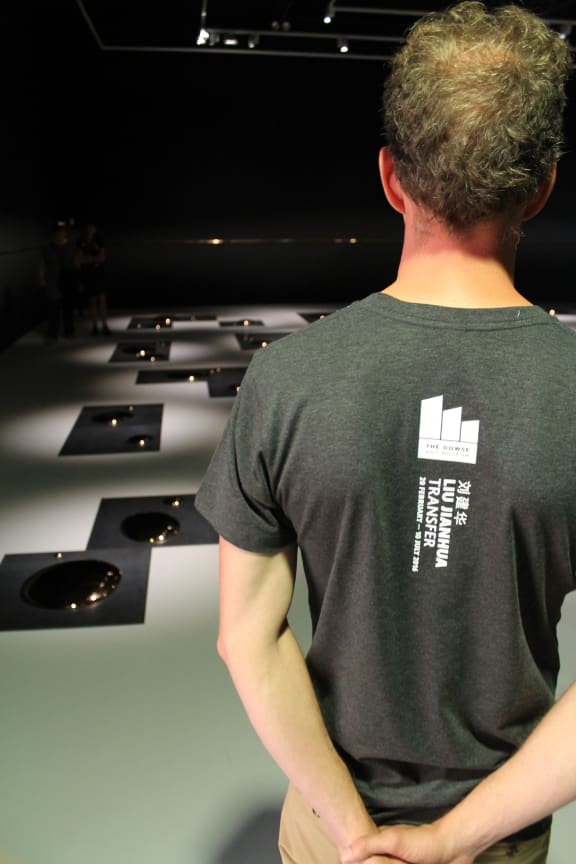War has been fought over gold, people have died for gold ... they look like gold but they're not, they're porcelain - Emma Bugden, Curator, The Dowse Art Museum.
When walking into the Transfer exhibition space at The Dowse Art Museum in Lower Hutt, its numbers that confront first; 1500 individually cast ceramic pieces, 46 crates containing art work, dozens of pools of gold across a darkened floor, references to three airline crashes in China, one ceramic baby shoe hanging alone. White against white, the symbolic colour of death for Chinese ... the fragility of human life.
Internationally renowned, ceramicist Liu Jianhua is best known for his sculptural and installation works in porcelain and mixed media. The exhibition has taken two years to come to fruition. Curator Emma Bugden has always been a fan of Jianhua's work. On one of her several visits to China she finally met Jianhua at his studio in Shanghai.
Emma knew then that his work needed to come to New Zealand and now arguably two of the artist's most important installations are showing here, a coup for The Dowse Art Museum.
I arrive the day before the opening so that I can watch the last of the installation process. The two exhibition spaces are hives of activity, cherry picker cranes are driving carefully between the pieces hung on the walls or layering the floors. It's like watching giant, red mechanical bulls in a china shop.
Emma tells me that both installations span 15 years of the artists illustrious career and works. Regular Fragile and Square sort of 'book-end' his collective works. His very recent work Square (2015) only just had its première at the Pace Gallery in Beijing. He first came to the world stage at the Venice Biennale in 2003 with his Regular Fragile series - porcelain replicas of familiar objects that value appearance and symbolism over function.
Alissa Liu is one of the Front of House team at The Dowse. She's also Jianhua's translator and is assisting with the installation of his artworks. Jianhua came with his wife and a technical assistant, the team of three often travel together to install his works around the globe.
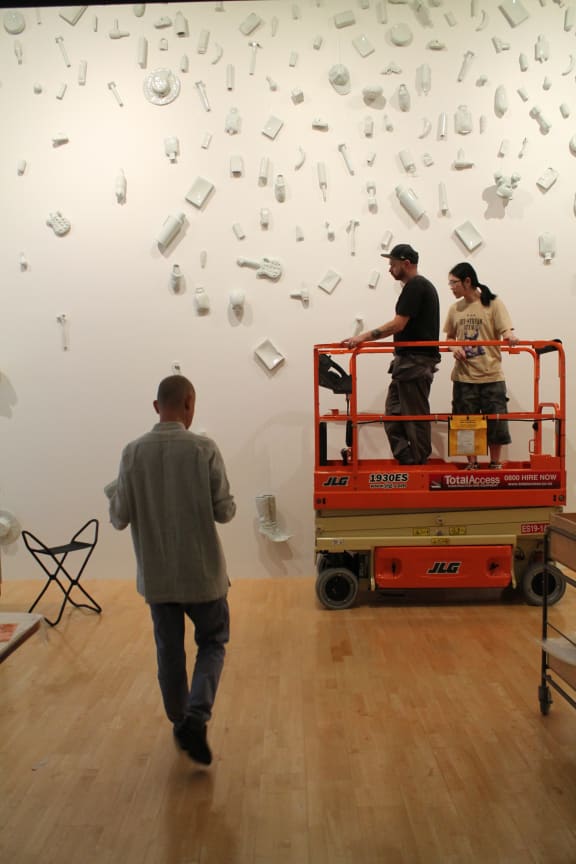
Installing the 1500 pieces of Regular Fragile Photo: RNZ / Lynda Chanwai-Earle
The Transfer exhibition needed more than a team of three to hang all the ceramic pieces individually swaddled within 46 crates. The curator, translator and many others from the Dowse's technical team donned latex gloves and assisted from the moment Jianhua arrived earlier that week.
The 53 year old artist was raised in Ji'an, Jiangxi Province. The tradition of ceramic making ran in the family. Liu Jianhua spent 14 years working in Jingdezhen, a city renown for its porcelain industry. He tells me that he was lucky to have an uncle working there, a master in ceramics able to take his young nephew on as an apprentice.
These were the days of the Cultural Revolution, China had not yet opened up to the influences of the international contemporary art world.
In 1989 in his late 20's Liu Jianhua graduated in Fine Art of Sculpture at the Jingdezhen Ceramics Institute, and started his own experimental practices. He tells me that he tried to depart from ceramics by utilising different mediums but he gravitated back to his original medium inevitably and almost intuitively.
The massive economic and social changes that have transformed China over the last three decades are reflected in his works. Regular Fragile was partly motivated by his response to the media images from three airline crashes that happened in a short space of time in his country.
He had just become a father himself. He tells me that the television coverage showed objects lying scattered across the coastline where the planes had come down. Common place and personal things like teddy bears and baby shoes shocked him, poignant in their banality.
Regular Fragile also deliberately plays on commodities and mass production, the sly ironic and humorous play on the fact that these commonplace porcelain objects were created individually and en-mass in China.
People desire gold, people desire things ... humans are fragile, but of course we always have hope. Hope lasts longer - Liu Jianhua
Then we enter the darkened 'black space' that houses Square. While his previous focus was on the social issues in China as the result of globalization, since 2008, he has explored new directions of contemporary art creation.
Alissa is helping explain my instinctive response as a viewer. His work Square strikes me as a rare feat of illusory alchemy, like an act of magic he has created gold from porcelain. I'm in awe, this installation seems to have mythological Greek overtones, the Midas touch.
The vast room has been deliberately darkened, all the gold disks are lit separately, it's mesmerizing and theatrical. I badly want to touch these disks but I know I'm not allowed. I'm also nervous about accidentally stepping in any puddle of gold, lest I am turned inanimate too.
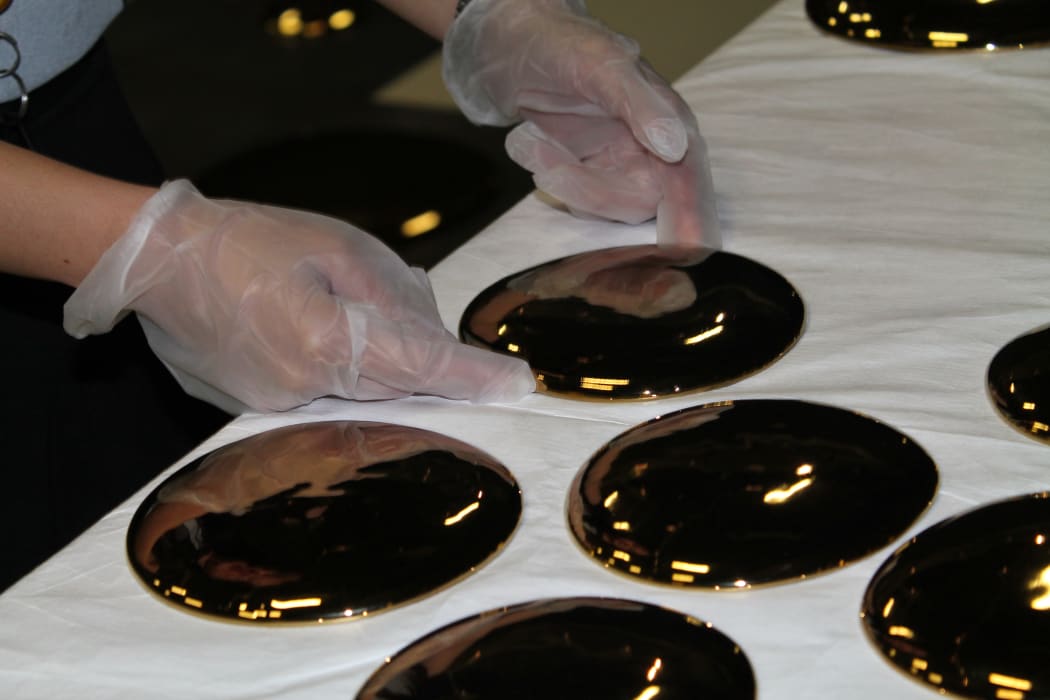
Translator Alissa Liu installs pieces for Square Photo: RNZ / Lynda Chanwai-Earle
Aren't you worried about audiences accidentally breaking your work?
Jianhua laughs, delighted, as Alissa translates. "He trust us, the work is meant to meant to be alluring, and anyway that's what insurance is for."
It's so sumptuous ... Mr Liu talks about the seduction and desire of beauty. One of the magical things about this exhibition is the way he takes one of the oldest mediums and brings something so new to it - Courtney Johnston, Director, The Dowse Art Museum.
Opening and public discussion:
The next day sees the launch and public discussion. Dr Hui Luo is chairing the panel discussion.He tells me that alchemy is just the word he would use to describe Jianhua's work Square. Dr Hui says the darkened space seemed reminiscent of the way emperors were entombed in mausoleums during first imperial dynasty of Ancient China. Legend has it that rivers of mercury ran around the subterranean tombs during the Qin Dynasty.
Firstly I was struck by the scale but 'alchemy' is the word I'm after. Liu Jianhua has created something that looks like the elixir for immortality in his work - Dr Hui Luo, Victoria University
For Dr Hui, Square also evoked the ancient Taoist art of Pao zhi, where alchemy focused mainly on the purification of one's spirit and body in the hopes of gaining immortality. It was through the practice of Qigong and consumption of alchemical medicines or elixirs using ingredients such as honey and wine cooked with toxic metals such as lead, arsenic and mercury.
Transfer certainly struck a chord with viewers on the day. One woman was moved to tears by Jianhua's installations, insisting that she will be telling others to see this exhibition, the allure of the 'fragile' and the 'mythological' all too powerful to resist.
